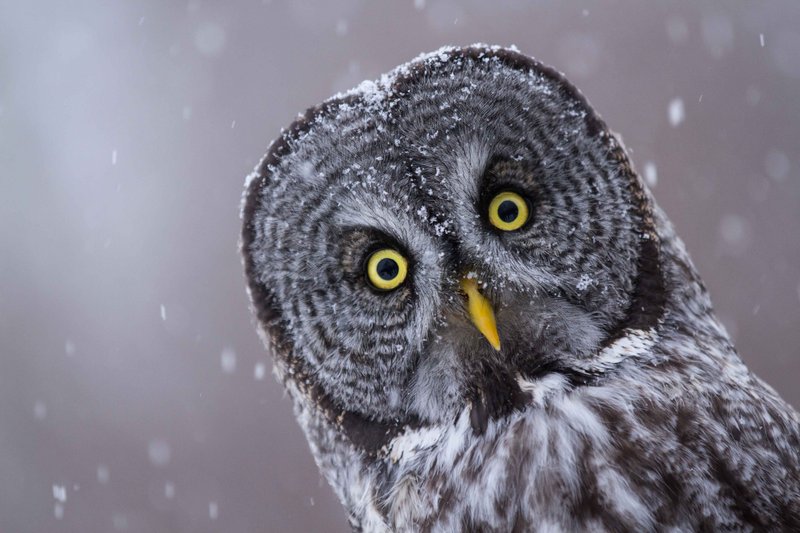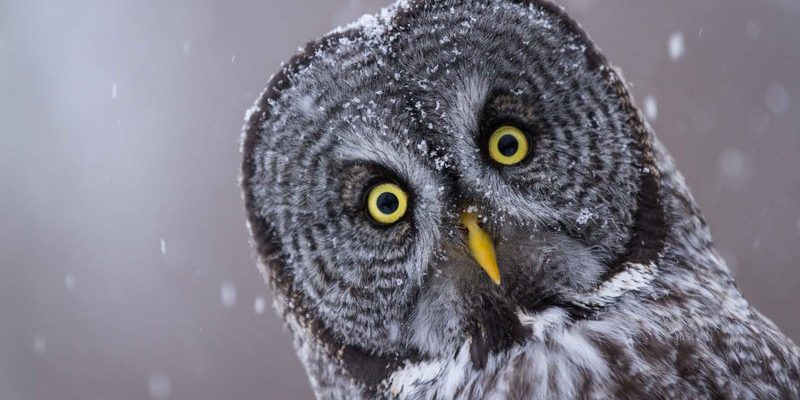
Picture it like a conversation at a coffee shop: each voice is unique, and the tone depending on the message. Owls are no different. In fact, they have a fascinating range of sounds that serve different purposes—from attracting a mate to warding off rivals. Let’s dive into the world of owls and explore what these vocalizations can tell us about their behavior, social structure, and even their habitat.
Why Do Owls Vocalize?
Understanding owl vocalizations starts with recognizing why they make sounds in the first place. Owls are primarily nocturnal, which means they’re most active at night when their calls can carry further and are less likely to be interrupted by other creatures. Their vocalizations play a critical role in their survival and social interactions.
One primary reason for these calls is territorial defense. Owls are known for being quite protective of their hunting grounds. A strong, clear hoot can help establish boundaries and send a message to others: “This is mine!” Think of it as a friendly reminder to other owls to keep their distance.
Another reason for vocalizations is mating calls. During the breeding season, male owls often hoot to attract females. The richness and frequency of these calls can indicate the owl’s fitness and readiness to mate. So, when you hear a series of strong hoots, it might just be a love song in the making!
The Common Types of Owl Calls
Owls produce a spectrum of vocalizations, each with its own meaning. Here are some of the most common types:
- Hooting: The most recognizable sound, often rhythmic and deep. It’s primarily used for territory establishment.
- Whining: A softer, elongated sound that can indicate distress or a call to offspring.
- Screeching: High-pitched and startling, often used by young owls as a warning signal.
- Chirps: Quick and sharp sounds that can express excitement or alarm.
Understanding these calls can help you identify different species of owls and their behaviors. Next time you’re out and hear them, you might find yourself deciphering their messages!
How Do Different Species Communicate?
Each species has its own distinct vocal style, and it can be quite enlightening to listen closely. For instance, the Great Horned Owl, with its iconic tufts, has a deep, resonant hoot that can be heard over long distances. In contrast, the Eastern Screech Owl has a more melodic trill, offering a softer sound that blends almost seamlessly into the night.
This diversity in vocalizations is essential. It aids in communication while reducing confusion among different species. Imagine if everyone spoke the same language: it would be a lot harder to figure out who’s saying what! By having unique calls, they can quickly identify each other and avoid unnecessary confrontations.
What’s also interesting is how these vocalizations change based on the time of year. During breeding seasons, many owls become more vocal as they search for mates. It’s like nature’s version of speed dating, where every call could mean the difference between finding a partner or going home alone!
Situational Context of Owl Sounds
When observing owl vocalizations, context matters. For example, a lone hoot at dusk can signal the start of an owl’s active hours. But if you hear a flurry of hoots or screeches, it might indicate that a territorial dispute is taking place or that a pair is courting.
Moreover, time of day affects their calls. During dusk and dawn, you might notice more activity as owls begin or end their hunting sessions. This is their hunting hour, where communication through calls becomes crucial for locating each other and coordinating hunts.
It’s almost like they have a secret schedule, and the rest of the animal world is just trying to catch up!
How Humans Interact with Owl Sounds
Owls have fascinated humans for centuries, and their calls have sparked both fear and reverence throughout history. Many cultures view owls as omens, often associating them with wisdom or the supernatural, while others may see their calls as harbingers of bad luck.
Interestingly, researchers have also tapped into these vocalizations for conservation efforts. By understanding the vocal patterns of owls, scientists can monitor populations and assess the health of their habitats. It’s a reminder that these fascinating creatures are more than just a pretty face; they’re vital indicators of ecological balance.
Plus, for bird watchers and nature enthusiasts, listening for owl calls can add a whole new layer to your outdoor experiences. Tracking down an owl by its call can feel like a treasure hunt, rewarding patience and attention with an unforgettable encounter.
Common Misconceptions About Owl Sounds
There are several myths surrounding the sounds owls make that deserve clarification. One common misconception is that all owls hoot. In reality, many species have distinct calls that can vary widely. Not every owl is a hooter—their range of sounds is as varied as their habitats!
Another myth is that owls only hoot at night. While it’s true that they are primarily nocturnal, some species can also be active during the day and may vocalize then. If you’re a morning person, you might just catch a glimpse of one calling out as the sun rises.
Being aware of these facts can deepen your appreciation for these majestic birds and their complex social lives.
The Role of Owl Vocalizations in Ecosystems
Owls are important players in their ecosystems, and their vocalizations contribute to ecological balance. By establishing territories and attracting mates, they help regulate their populations, ensuring that habitats can sustain their numbers over time. This, in turn, affects the populations of their prey—typically small mammals and insects—helping to maintain a healthy balance.
Additionally, when owls communicate with one another, they create a social structure within their species. This dynamic contributes to their ability to successfully hunt, mate, and raise young. It’s a beautifully interconnected system where every hoot and call has a purpose.
Understanding these vocalizations isn’t just interesting; it’s vital for anyone interested in wildlife conservation. The more we learn about how these birds communicate, the better we can protect their habitats and ensure their survival.
Owl vocalizations are more than just sounds—they’re a fascinating language all their own, filled with deeply woven meanings and rich with insights into their lives. From hoots that mark territory to trills that signal a bonding moment, every call serves a crucial function in the owl world.
So, the next time you hear that captivating call echoing through the woods, take a moment to appreciate the communication at play. These vocalizations remind us of the beauty of nature and the intricate connections within it. Whether you’re a seasoned birdwatcher or just someone curious about the night sounds, owls have a lot to teach us, one hoot at a time!

